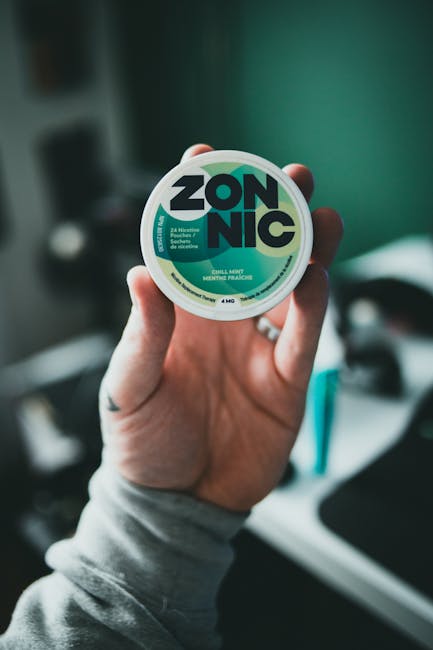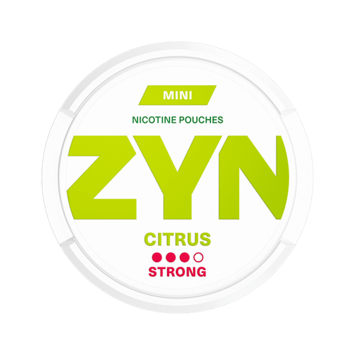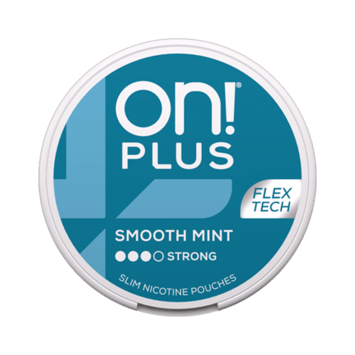What’s in nicotine pouches?
Philip Plainstein

Nicotine pouches are small, tobacco-free products designed to be placed between the lip and gum. They provide a discreet way to consume nicotine without the need for smoking or chewing. These pouches have gained popularity in the UK since their introduction in 2019, offering a modern alternative to traditional tobacco products.
Each pouch contains nicotine as the primary active ingredient, along with plant-based fibres, flavourings, and gum base. The nicotine is extracted from high-grade tobacco plants, ensuring a consistent and controlled delivery. The nicotine content varies, ranging from 1.29 mg to 6.11 mg per pouch, with some stronger versions reaching up to 11 mg.
Unlike traditional smoking, nicotine pouches do not produce smoke or require combustion. This makes them an appealing option for those seeking to reduce their exposure to harmful substances found in cigarettes. Additionally, they are regulated under the UK’s General Product Safety Regulations, ensuring a level of quality and safety for consumers.
For more information about the terms and conditions surrounding the use of nicotine pouches, you can visit our terms and conditions page.
Understanding Nicotine Pouches: An Overview
Nicotine pouches have emerged as a modern, tobacco-free alternative for those seeking to manage their nicotine intake without smoking. Originating around 2019 in markets like Europe, the USA, and Japan, these products have recently gained attention in the UK. Their rise in popularity can be attributed to their sleek design and variety of flavours, appealing to both smokers and non-smokers alike.
Origins and Market Introduction
These pouches first appeared in Europe and other global markets, offering a discreet way to consume nicotine. Unlike traditional smokeless tobacco products such as snus, nicotine pouches do not contain tobacco leaves, making them an attractive option for those wary of tobacco-related health risks.
Comparisons with Smokeless Tobacco Products
Nicotine pouches differ significantly from traditional smokeless tobacco products. For instance, they do not require spitting, making them more convenient for public use. Additionally, their tobacco-free composition sets them apart from products like snus, which contain fermented tobacco leaves. This distinction is crucial for consumers concerned about the health implications of tobacco use.
As highlighted by a public health expert, “Nicotine pouches represent a paradigm shift in nicotine delivery, offering a potentially safer alternative for smokers.” This perspective underscores their growing acceptance in the health community.
| Feature | Nicotine Pouches | Traditional Smokeless Tobacco |
|---|---|---|
| Tobacco Content | No tobacco leaves | Contains tobacco leaves |
| Usage | Discreet, no spitting required | Often requires spitting |
| Health Risks | Lower risk compared to smoking | Higher risk due to tobacco by-products |
The health considerations surrounding nicotine pouches are significant. While they are marketed as a safer option compared to smoking, they are not without risks. Nicotine itself is highly addictive and can lead to various health issues, including cardiovascular problems and reproductive challenges. Despite these risks, many users find them effective for managing cravings without the harmful effects of smoking.
Current trends suggest that nicotine pouches are influencing smoking behaviour, particularly among younger demographics. Their appeal lies in their modern design and flavour variety, which contrasts sharply with traditional tobacco products. However, regulatory bodies are closely monitoring their impact to ensure public health safety.
Exploring what is in nicotine pouches: Composition and Ingredients
Understanding the makeup of nicotine pouches is essential for grasping their function and appeal. These products typically consist of a few key components, each serving a specific purpose. The primary ingredients include nicotine, water, and a non-tobacco substrate, which provides a base similar to that found in snus and gum products. This substrate helps maintain the pouch’s structure and ensures a consistent release of nicotine.
Nicotine, Water, and Non-Tobacco Substrate
The nicotine in these pouches can be derived from tobacco or produced synthetically in a lab. Water makes up a significant portion of the pouch, aiding in moisture retention and facilitating the release of nicotine. The non-tobacco substrate, often made from plant-based fibres, plays a crucial role in mimicking the texture of traditional snus and gum, offering a familiar experience for users.
Additives, Flavourings, and Sweeteners
Additives and flavourings are incorporated to enhance the user experience. These may include food-grade additives and artificial sweeteners like acesulfame K and sucralose, which not only improve taste but also reduce the risk of dental caries. Flavourings come in a wide variety, from classic mint to more unique options, catering to diverse preferences. These elements work together to create a pleasant and satisfying experience, making nicotine pouches a popular choice for those seeking to manage their nicotine intake without smoking.
The Health Implications of Using Nicotine Pouches
While nicotine pouches are often marketed as a safer alternative to smoking, they still carry notable health risks. Research shows that these products can cause oral tissue irritation and potentially lead to gum recession, similar to traditional smokeless tobacco products.
Oral Health Effects and Local Recession Concerns
When you place a nicotine pouch in your mouth, the nicotine is absorbed through the mouth tissues. This process can irritate the gums and surrounding areas. Studies indicate that prolonged use may contribute to gingival recession, a condition where the gums pull away from the teeth. Additionally, the ingredients in these pouches, such as flavourings and sweeteners, can reduce saliva production, increasing the risk of tooth decay and bad breath.
Cardiovascular and Systemic Considerations
Beyond oral health, using nicotine pouches can have broader systemic effects. Nicotine is a stimulant that can increase heart rate and blood pressure, potentially raising the risk of cardiovascular issues like hypertension. Long-term use may also affect other bodily systems, as nicotine is known to impact reproductive health and nervous system function.
While nicotine pouches contain fewer harmful chemicals compared to smoked tobacco, they are not entirely risk-free. Regulatory bodies continue to monitor their impact, particularly in relation to their appeal among younger demographics and vulnerable populations.
Nicotine Pouches and Smoking Cessation: A Viable Alternative?
Exploring the role of nicotine pouches in smoking cessation reveals a mixed picture. While these products deliver nicotine effectively, evidence supporting their role in helping users quit smoking remains limited compared to approved nicotine replacement therapies (NRTs) like patches or gum.
Comparison with Nicotine Replacement Therapies
NRTs, such as patches and lozenges, have decades of research backing their safety and effectiveness. In contrast, nicotine pouches lack similar validation. Despite their popularity, medical experts caution against relying on them for cessation due to insufficient data on their long-term benefits and risks.
User Experience and Craving Management
Some users report that nicotine pouches help manage cravings more conveniently than traditional NRTs. However, concerns arise, particularly among young persons, as their use can lead to nicotine addiction. The appeal of various flavours and sleek packaging raises questions about their potential harm, especially to vulnerable groups.
While nicotine pouches may offer a simpler alternative for those seeking to quit smoking, their effectiveness and safety as a cessation tool remain uncertain. Regulatory bodies and health experts continue to monitor their impact, emphasizing the need for further research to fully understand their role in smoking cessation.
Decoding the Regulatory Landscape in the United Kingdom
The regulatory framework governing nicotine pouches in the UK is currently shaped by the General Product Safety Regulations. These regulations ensure that products meet essential safety requirements, although they are not specifically tailored to nicotine pouches. This framework differs significantly from the stricter regulations applied to traditional cigarettes and other nicotine products.
Current Legislation and General Product Safety Regulations
Under the General Product Safety Regulations, nicotine pouches are classified as consumer products rather than tobacco products. This classification means they are subject to less stringent controls compared to cigarettes. However, as their popularity grows, regulators are closely monitoring their impact on public health. The current framework requires manufacturers to ensure their products are safe for consumers, but it does not impose the same restrictions as those on tobacco products.
Future Directions and Focused Regulatory Frameworks
As the market share of nicotine pouches continues to expand, there is an increasing likelihood of more targeted regulations. Regulators are paying attention to the long-term use of these products and their potential effects on public health. Future changes may include stricter controls on flavourings and nicotine levels to align more closely with regulations for other nicotine products. The goal is to address the nuances of nicotine delivery and ensure user safety while balancing market demands.
Weighing the Risks and Benefits of Nicotine Pouch Use
When considering whether to use nicotine pouches, it’s important to balance the potential benefits against the risks. While these products are often seen as a lower-risk alternative to smoking, they are not without their drawbacks.
Potential Side Effects and Addiction Concerns
One of the main concerns with nicotine pouches is their potential to cause addiction. Nicotine is a highly addictive substance, and the convenience of these products can lead to frequent use. Over time, this can result in dependence and withdrawal symptoms when trying to quit. Additionally, some users may experience oral irritation or discomfort when using these pouches, which can be uncomfortable.
Impact on Young People, Pregnant Women and Other At-Risk Groups
Nicotine pouches can have particularly serious consequences for certain groups. Young people, for example, may be more susceptible to the addictive properties of nicotine, potentially leading to long-term health issues. Pregnant women should also exercise caution, as nicotine can affect fetal development. Furthermore, the marketing strategies of some brands, which often feature appealing flavours and sleek packaging, can make these products particularly attractive to younger audiences, raising concerns about their impact on vulnerable populations.
“Nicotine pouches represent a complex public health challenge, balancing harm reduction for smokers with the risk of initiating nicotine use among youth and other vulnerable groups.” – Public Health Expert
While nicotine pouches may offer a safer alternative to smoking for some, their widespread use requires careful consideration of both the immediate and long-term effects. As with any nicotine product, it’s crucial to weigh the benefits against the risks and to be mindful of how they might impact different groups of people.
Flavour Options, Market Trends and Consumer Impact
The rise of nicotine pouches in the UK has been significantly influenced by their diverse flavour options and sleek packaging. These elements not only attract new users but also drive market growth. Flavourings play a crucial role in enhancing the appeal of these products, making them more enjoyable for consumers.
Variety of Flavours and Attractive Packaging
From mint to citrus, the array of flavours available caters to a broad spectrum of preferences. Flavourings such as berry and fruit fusion are particularly popular, offering a refreshing experience. Sweeteners like acesulfame K and sucralose are commonly used to enhance taste without the need for sugar, promoting mouth comfort. This approach not only improves user satisfaction but also makes the products more appealing to those seeking a smoother experience.
Marketing Strategies and Consumer Appeal
Current market trends show a steady increase in sales, with the UK market projected to grow at a CAGR of 7.6% from 2025 to 2030. The attractive packaging and discreet nature of these pouches have contributed significantly to their popularity. Marketing strategies often highlight the convenience and variety of flavours, making them particularly appealing to younger demographics. As a result, the impact of these strategies is evident in the rising consumer demand and market expansion.
Final Thoughts on Nicotine Pouches in Today’s Landscape
Nicotine pouches have carved out a unique space in the nicotine consumption market, offering users a tobacco-free alternative that is both discreet and convenient. As discussed throughout this article, these products differ significantly from traditional tobacco-based options, primarily due to their composition and delivery method.
While they present a potentially lower-risk option compared to smoking, it’s crucial to acknowledge the side effects associated with their use. Current evidence suggests that nicotine pouches may aid in smoking cessation, though their efficacy remains less proven compared to approved nicotine replacement therapies. Experts caution that more research is needed to fully understand their long-term effects and role in cessation.
Adults considering these products should be aware of the potential for addiction and side effects, such as oral irritation. The impact on younger demographics and vulnerable groups also raises concerns, highlighting the need for continued study and regulatory oversight.
In conclusion, nicotine pouches offer a modern alternative for those seeking to manage their nicotine intake without smoking. However, their benefits and risks must be carefully weighed. For those exploring safer alternatives, products like nicotine pouches could be a viable option, but it’s essential to stay informed and consider consulting healthcare professionals for personalized advice. For more insights on the future of nicotine consumption, visit this resource.









